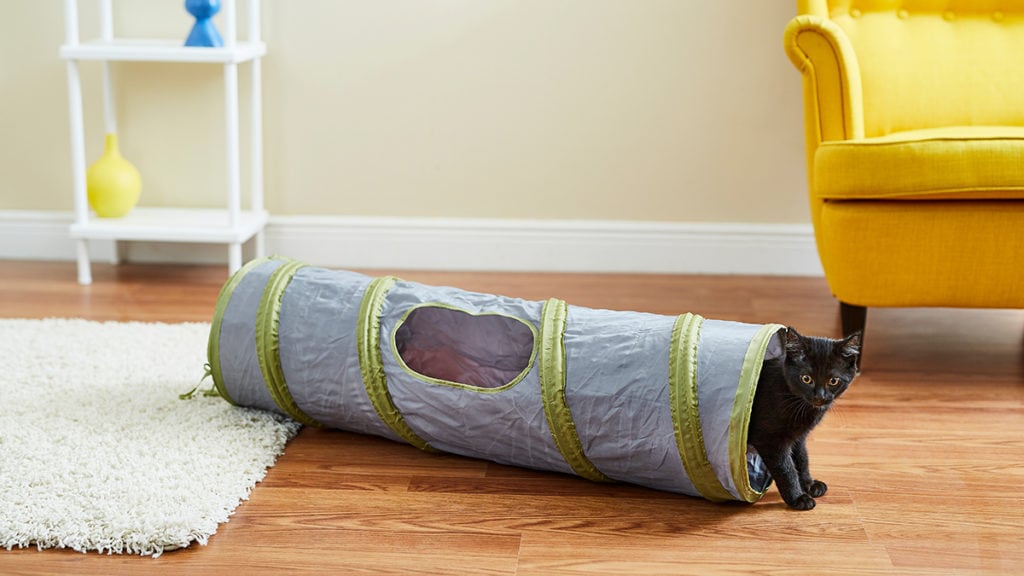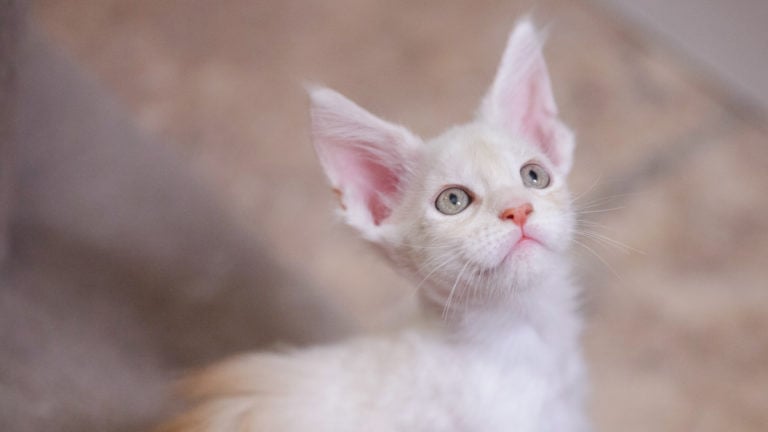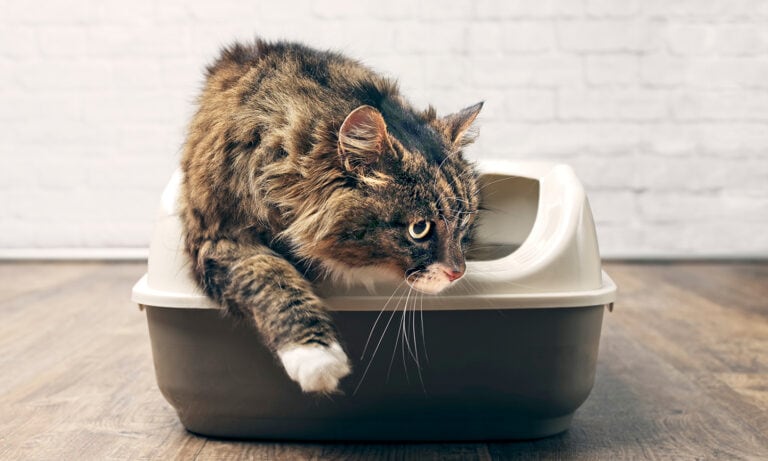Is your cat slim, trim and quick on her feet, or is she one to lounge around on the couch just waiting for her next meal? If you are the cat parent to an overweight cat or obese cat, you may want to consider encouraging your cat to become more active. If you already have an active, fit cat, you can use these workout plans to keep your furry friend at an ideal cat weight.
To help you reach your cat’s weight loss goals, we talked with Dr. Sarah Wooten, DVM, CVJ and consulting veterinarian for Big Barker, to discuss workouts for overweight cats and the best way to transform them into fit cats.
Maintaining an Ideal Cat Weight is Crucial
“Exercise is critical to your cat’s health,” says Dr. Wooten. “We all know that sitting kills—the same is true for your cat.” Dr. Wooten notes that when you have an obese cat, they can become resistant to their own insulin, which causes diabetes. A diabetic cat will display symptoms like weight loss and an increase in urination, drinking and appetite.
While many people may think that a fat cat is a happy cat, Dr. Wooten warns, “On the contrary, a cat that exercises regularly is much more likely to live longer and be healthier.” A fit cat with strong muscles can maintain a healthy metabolism, which will effectively keep excess weight from accumulating on your cat.
Plus, fit cats are ultimately less susceptible to diseases and injuries, which means lower vet bills. “So, exercise away!” says Dr. Wooten.
Is Your Cat Able to Work Out?
Before engaging any cat in a fitness routine, first consider whether they are healthy enough to participate.
“One of the most important things you can do for your pet is make sure he or she is not painful from arthritis. Most older, overweight cats have some level of arthritis, which they very sneakily keep hidden from their pet parents,” says Dr. Wooten.
It is best to consult with your veterinarian before putting your cat on a workout plan.
10-Minute Fit Cat Workout Plans
Keep in mind that when it comes to cats, “It’s less about exercise and more about engaging them in play and offering outlets for their innate predatory behavior,” says Dr. Amy L. Pike, DVM, DACVB, Chief of the Behavior Medicine Division of the Veterinary Referral Center of Northern Virginia. “Kittens usually play in 4 periods per day for about an hour each time. This will decline as the kitten becomes an adult and will become less intense and less frequent, and for shorter duration.”
Cats can lose interest relatively quickly, “Owners may have a 30-minute block to devote to playing with the cat; but the cat will only want to play for 5-10 minutes and then will be ready to play again after resting,” says Dr. Pike. If you find that your cat is not engaging, Dr. Pike recommends taking a short 5-minute break and then trying a new activity.
If you want to create an enriching environment for your cat and improve their physical and mental health, check out these 10-minute exercises for cats and try one of them with your cat at least once per day.
Making the Most of Meal Time
Split your cat’s food into a few bowls and place them throughout the house. Place some on counters or elevated ledges so your cat must jump or climb to reach it. A cat tree is perfect for this. The Frisco 72-Inch Cat Tree is a good example; just place their cat food at the top of the cat tower and watch your kitty clamor for their kitty kibbles! Another fun option is to place treat dispensers in different locations, which requires your cat to not only find the food, but to engage with the toy before receiving her meal.
Stairway to a Fit Cat
Using the same cat tree, or an even taller one, place a treat or some cat kibble at the top. Make sure your cat sees you do this. After they climb their way to the top to retrieve their reward, have them watch you place yet another treat at the bottom of the tree. Once they jump or pounce to the bottom, repeat this process about 10-15 times.
Laser Pointer
“Since cats are natural predators of small mammals and birds, toys that simulate the movement, look, feel and noises made by mice and birds are often the preferred toys,” says Dr. Pike. With a laser pointer, you’ll be satisfying your cat’s natural hunting instincts by giving them the thrill of the chase. Just turn on the device, and point the laser in different places around the house or yard.
To effectively engage the hunting instinct, “it is important to let your cat ‘catch’ the prey. So, if you are using a laser pointer, have it come to rest on a treat that the cat can pounce on and eat,” says Dr. Wooten. Play with your cat for about 15 minutes a day, dispensing about 5-8 healthy treats to prevent boredom.
Interactive Cat Toys
“Interactive cat toys are an incredibly important part of your cat’s physical, mental and emotional fitness,” says Dr. Wooten. They allow your cat to engage in natural behaviors like climbing, hunting, scratching, running and hiding, which keep your cat healthy, happy and less likely to develop behavioral issues.
An interactive toy that effectively encourages cats to exercise is the SmartyKat Loco Motion Electronic Cat Toy. This toy flips around a ball of feathers that will stimulate any cat’s hunting instincts. Simply turn it on and watch your fur baby attack the feather toy repeatedly; just make sure to turn off the toy after 15 minutes to prevent overexertion.

Samantha Schwab, Junior Editor
As an aspiring cat mom, Samantha Schwab can be found mining keywords, meticulously editing BeChewy blog posts or standing at her desk (usually all three!). An espresso shot and kitty cuddles are the only things that stand between Samantha and conquering the (pet) world!
Share:
















